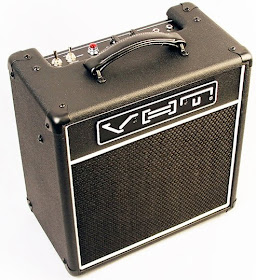
Tuesday, December 21, 2010
The Phase Inverter Tube

Tuesday, December 14, 2010
Feedback and the Rectifiers

The short answer is, No.
Let’s review feedback for a moment: We all know it well. When your amp starts to howl the very first thing you do is turn down either your amp or your mic. In other words, you reduce the amplitude of your entire system: harp, mic, and amp.
Also, we all know that if we crank up the treble on our amp it is more likely to start howling feedback, so we usually have the treble set relatively low.
Swapping your tube rectifier for a copper recto of the same value will result in a slightly increased B+ voltage and a reduction in vintage sag tone, which gives the perception of a tighter, more present sound. Does it make your amp truly louder? Maybe very slightly louder, but it would be hard to hear.
Will it reduce feedback? How could it? All the remedies we know of for feedback involve reduced amplitude and/or EQ filters. The rectifier does neither. The claim is bogus.
Review: Dan Treanor – My Blues Diary

Wednesday, December 8, 2010
The Mission Chicago 32-20 Harp Amp

Comparison: Kalamazoo amp vs. VHT Special 6
Here are three links to Youtube videos of the Kalamazoo amp:
Kalamazoo model 1 blues harp amp
custom kalamazoo harp amp model 1
Kalamazoo amp and BluexLab harp mic
The Kalamazoo amp suffers from a design that gives it that raspy harsh tone: It uses a single EL84 power tube, while the VHT Special 6 amp uses the warmer sounding 6V6 power tube. The 6V6 was the tube used in many classic harp amps from the glory days of tone… Amps such as the Fender Champ and Princeton, vintage Gibson amps, the National/Supro amps, the classic Premier amps like the Twin 8, and cool old PA amps like the Newcomb E-10B.
I cannot think of any classic harp amps that used a single EL84 tube. The EL84 has a characteristic tone that I call a “crackly mush.” The tube has a very low negative bias voltage, so the tube is driven to square wave distortion very easily. I wrote about the details of this problem here: EL84 Harp Amps.
The 6V6 tube has a much warmer tone and smoother distortion, which is why it was the choice of so many of the great blues harp players of the 50s.
The Kalamazoo amp has been popular as a low cost practice amp for harp players. One particular vendor rehabs these old amps and sells them for $269 for a “beat up Model 1,” and up to $379 for a “really clean Model 2.” No matter which one you buy, you still get and old amp made of particle board that often disintegrates when exposed to moisture.
For less than $200 you can buy a brand new VHT Special 6 whose cabinet is made entirely of finger jointed plywood. Its circuit is soldered point-to-point on an eyelet board, and it is guaranteed for 5 years (90 days on speaker and tubes). The amp circuit is essentially a vintage Fender Blackface Champ, with a 10-inch speaker in a larger cabinet.
 When bench tested the VHT amp produces an honest 6 watts of power right at the point it begins to clip. It is very loud for a small amp. The Kalamazoo amps produce about 3 watts at the point they begin to clip. Some vendors claim the amps put out 8 or 10 watts, but that is an exaggeration and does not comport with the generally accepted methods of measuring amp power for the purpose of comparison.
When bench tested the VHT amp produces an honest 6 watts of power right at the point it begins to clip. It is very loud for a small amp. The Kalamazoo amps produce about 3 watts at the point they begin to clip. Some vendors claim the amps put out 8 or 10 watts, but that is an exaggeration and does not comport with the generally accepted methods of measuring amp power for the purpose of comparison.
Right out of the box the VHT is a much better harp amp than the more expensive Kalamazoo. Its tone is warmer and more dynamic, and much bigger and less boxy. For about the cost of the “beat up” Kalamazoo amp you could purchase a brand new upgraded VHT amp that is among the sweetest I have ever heard.
UPDATE: From Wikipedia - "When overdriven, the EL84 power tubes in these amplifiers produce a distinctive chiming, articulate, treble-heavy sound..." Yep, that's what I hear when harp is played through the Kalamazoo and other EL84 amps.
Sunday, December 5, 2010
Nic Clark playing the Modified VHT Special 6 amp
Great tone, eh? And it sounds huge. The amp was on 3 (9 o'clock on the volume control) and everybody was like, "Holy crap, that thing is loud." This was during a break at Ronnie Shellist's blues harp workshop last Sunday.